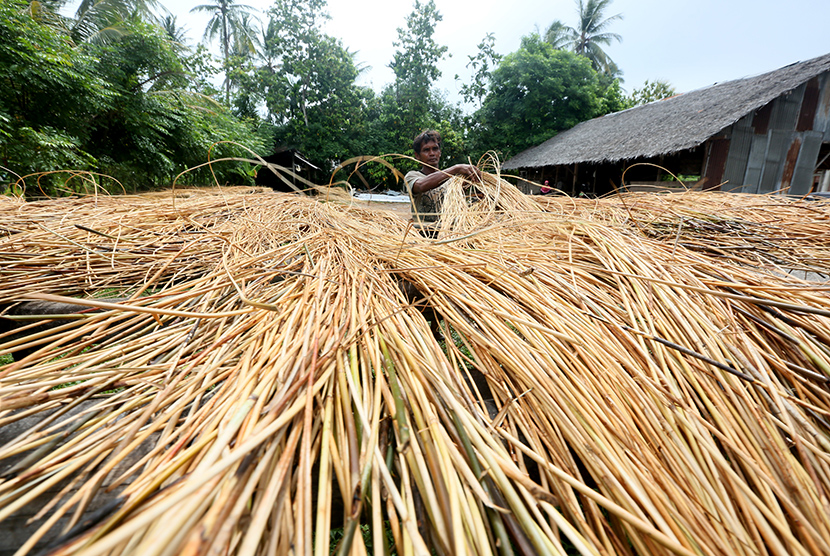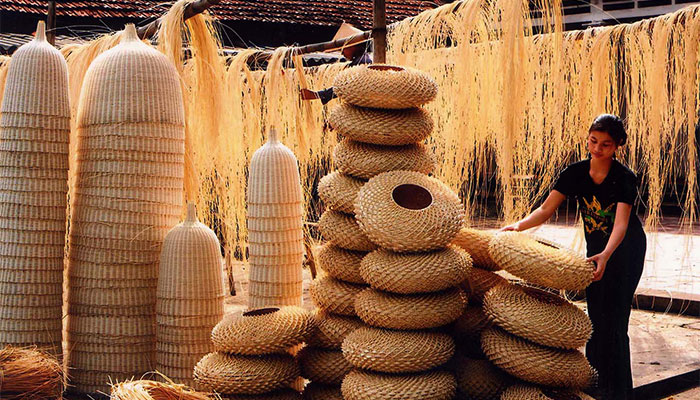No products in the cart.
News
Rattan facts and information
Rattan is a naturally renewable palm that grows in the tropical regions of Africa, Asia and Australasia, used for furniture, handicrafts, building material among others. This continues to be an invaluable part of rural people’s livelihoods in South and Southeast Asia.
Rattan Description
It belongs to the palm family (Arecales or Palmea) and is found from sea level up to 3,000 m. Around 600 species and 13 genera of rattan are known. Although most rattan species are native to the tropical regions of Africa, Asia, and Australia, there is a large variety in their distribution. Commercially-used rattan usually grows in hilly tropical areas, with a mean annual temperature of 25° C and an annual rainfall of -2,000 mm. As a result, the main area for production is in the tropical regions of South and Southeast Asia.
There are different types, such as high or low climbers, single stemmed or clustered rattan species. Some have very short and underground stems. Several rattan species are known to reach lengths of 100m.
Rattan sheaths have spines for protection, along with ‘whips’ that are also covered with spines. These play a major role in supporting the rattan as it grows over trees and other plants in the rainforest.
Distribution
The majority of the world’s rattans are found in Indonesia’s forests, with the rest of the world’s supply provided by the Philippines, Sri Lanka, Malaysia, Laos, Cambodia, Vietnam and Bangladesh among others.
Almost all the rattans are collected from tropical rainforests. Because of deforestation (e.g. forest conversion to other land uses), rattan populations have decreased over the last few decades and there is now a shortage of supply.
Collection and processing
It is an attractive resource because it is easier to harvest than timber, also easier to transport; it also grows faster than trees. Rattans’ canes are cut in the forest and are partially processed before being sold. Canes with small diameters are dried in the sun and often smoked using sulphur. Large canes are boiled in oil to make them dry and to protect them from insects.
Rattan products
Because it is light, durable and relatively flexible, rattan is used for a range of purposes:
- Food: The inner core as well as the shoot of some of species is edible.
- Furniture: Furniture is the main end products
- Shelter: it is an approved material for house building in rural areas.
- Handicraft: Handicraft, besides furniture, provides the main income of the rattan industry.
The skin of rattans’ strands is peeled off and used for weaving, while the “core” of the rattan can be used for various purposes in furniture making (wicker). Some rattan fruits exude a red resin called dragon’s blood. This resin was once considered to have medicinal properties and was also used as a dye for violins.
In 2010, scientists pioneered a new “wood to bone” process for the production of artificial bone made of rattan.
Trade
This plant is a growing, US$4 billion per year, industry. Village communities in Laos, Cambodia and Vietnam rely heavily on the rattans’ trade. Sales account for up to 50 % of cash income in villages, making rattan a major contributor to poverty alleviation in rural areas.
Vietnam is an important exporter of finished rattan products with almost 60% of its total production going to the European Union in 2005.
Other benefits
Rattan harvesting and processing provides an alternatives to logging timber in areas where forests are scarce.
In fact, it grows best under some sort of tree cover including secondary forest, fruit orchards, tree plantations or rubber estates. As a result rattans’ planting indirectly protects tree cover, along with forests.
Some species are appropriate for small-scale cultivation under fruit trees or in rubber gardens. This allows smallholders to earn extra money on small areas of land.
According to: greatermekong.panda.org
Lucy (Ms.)
Export Executive
Email: Sales2@safimex.com
Skype: gautrucluca | HP/WhatsApp: (+84) 396802832
SAFIMEX JOINT STOCK COMPANY
Head office: 216/20A Duong Ba Trac street, Ward 2, District 8, HCM City
Website: www.safimex.com


